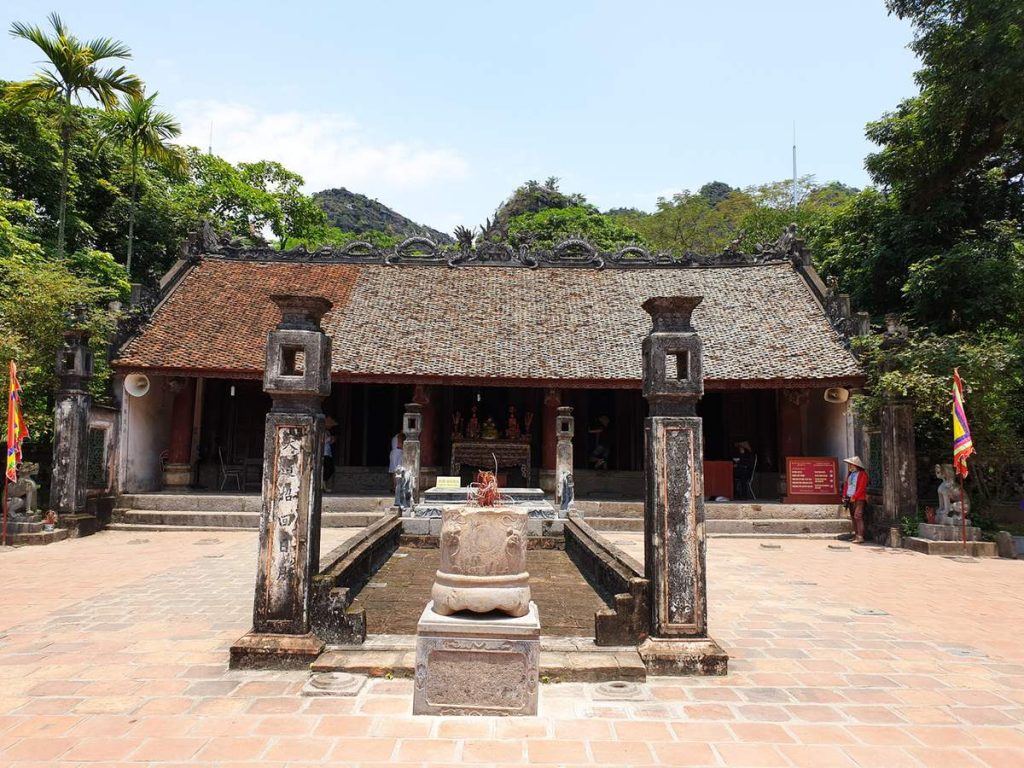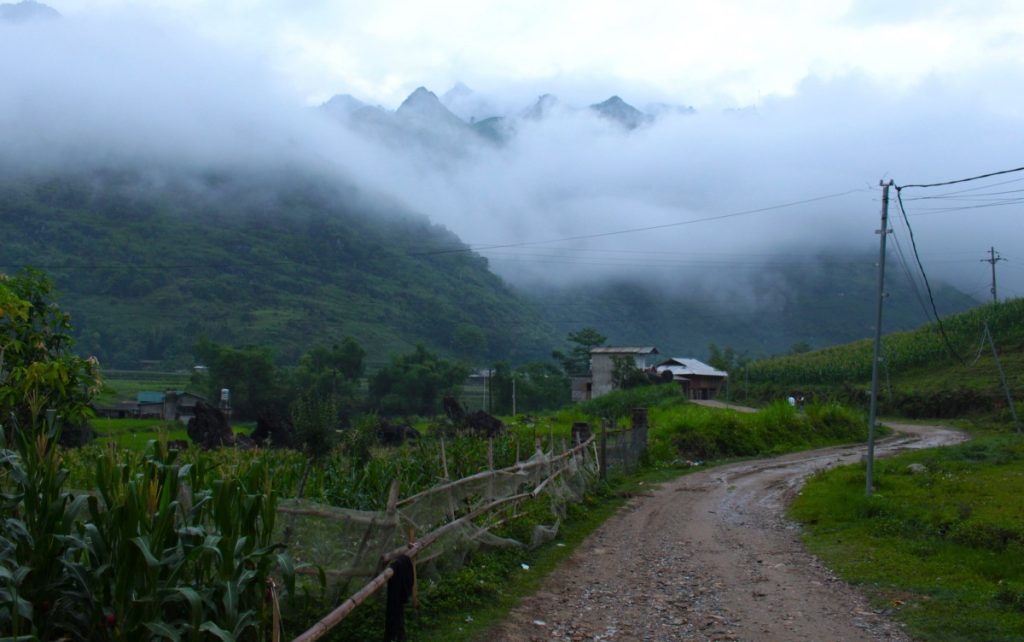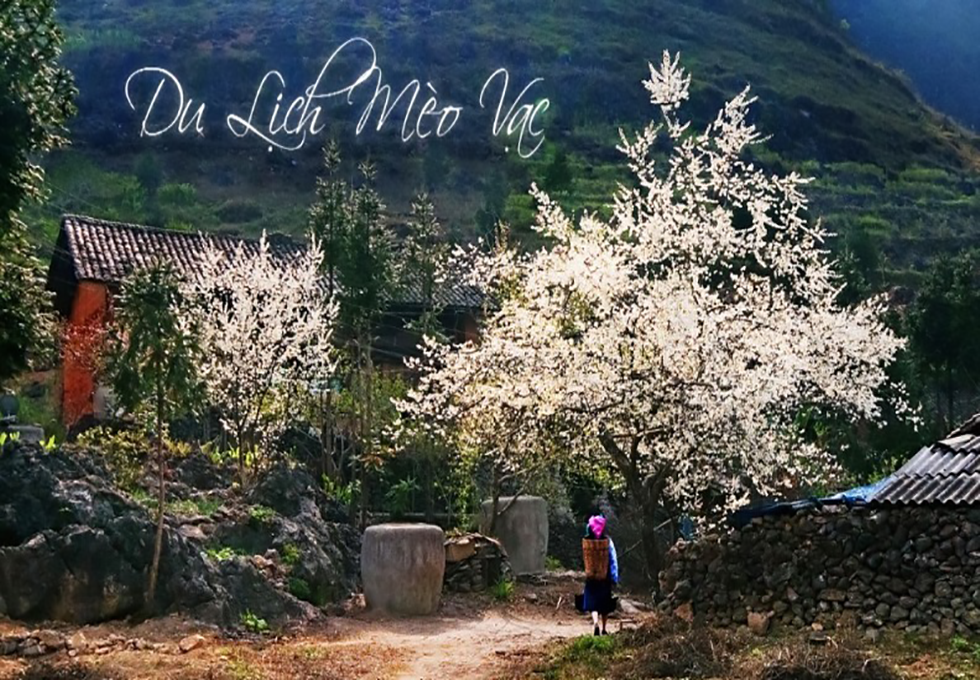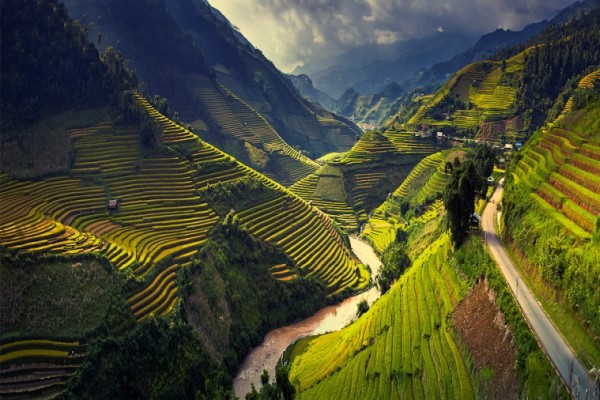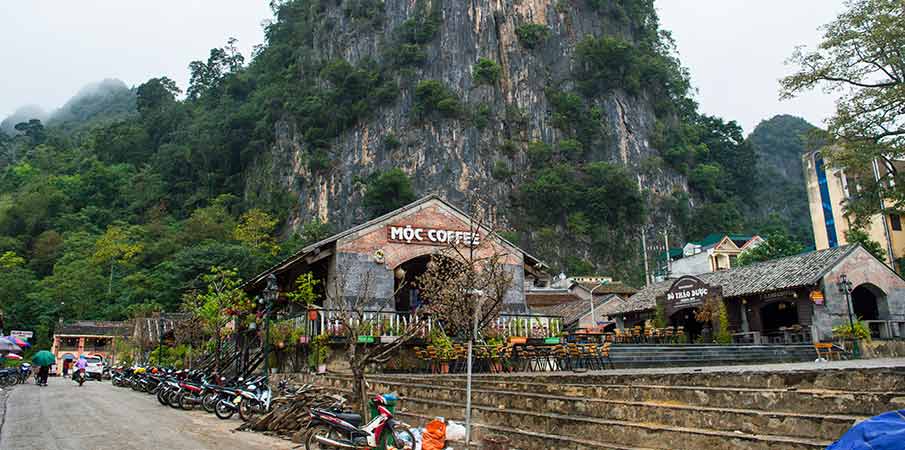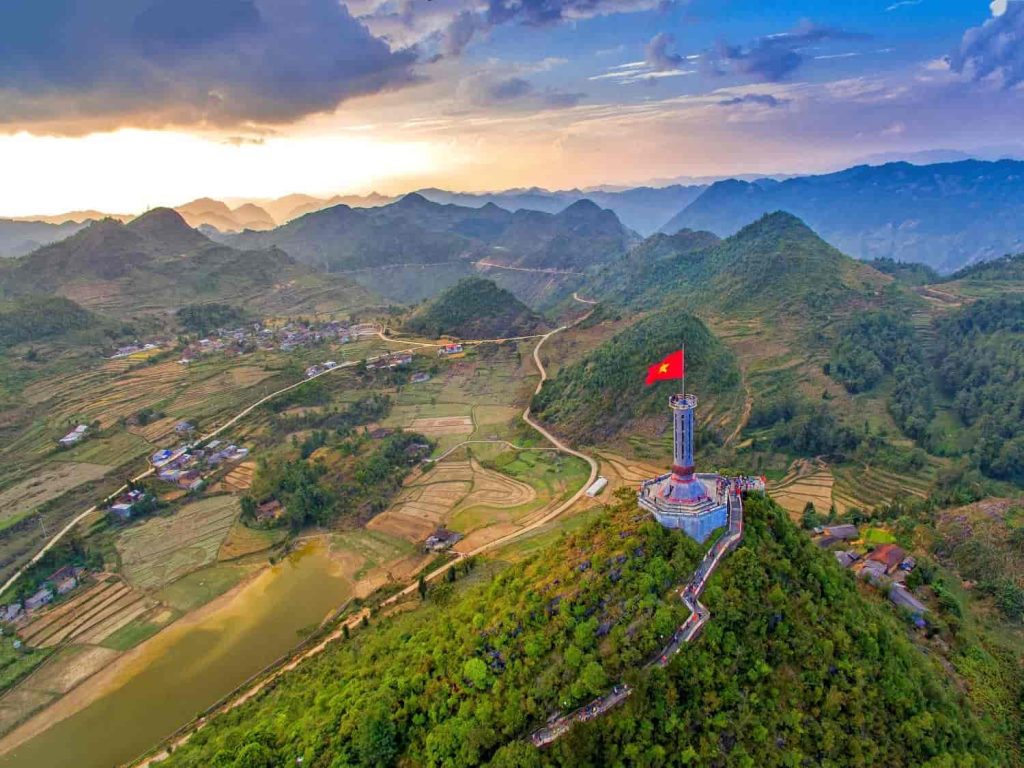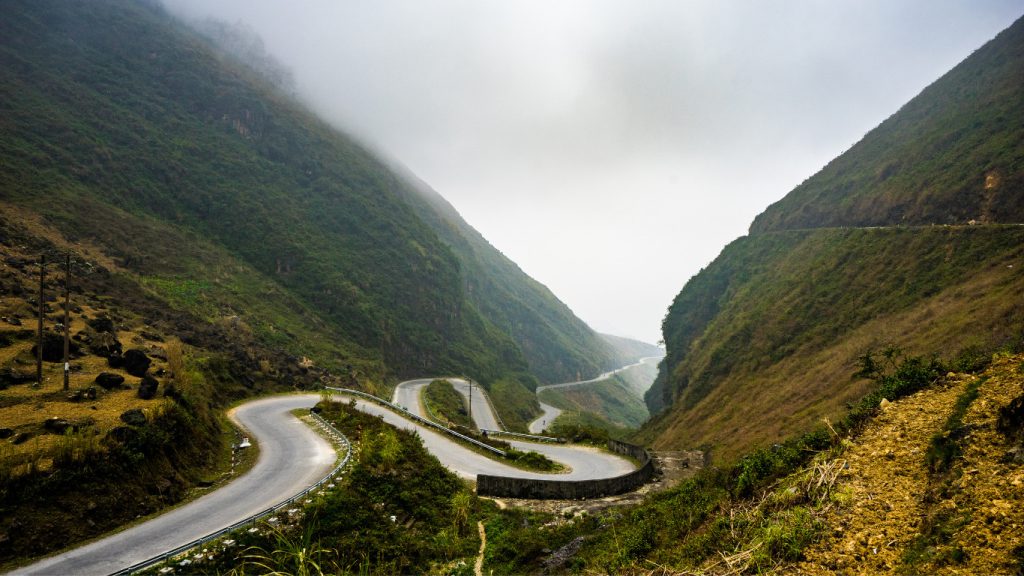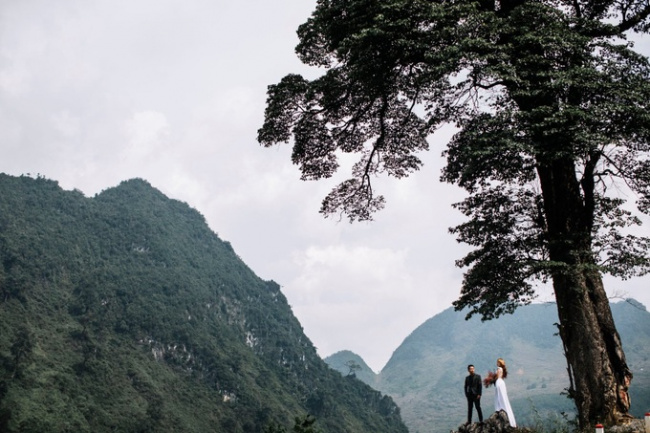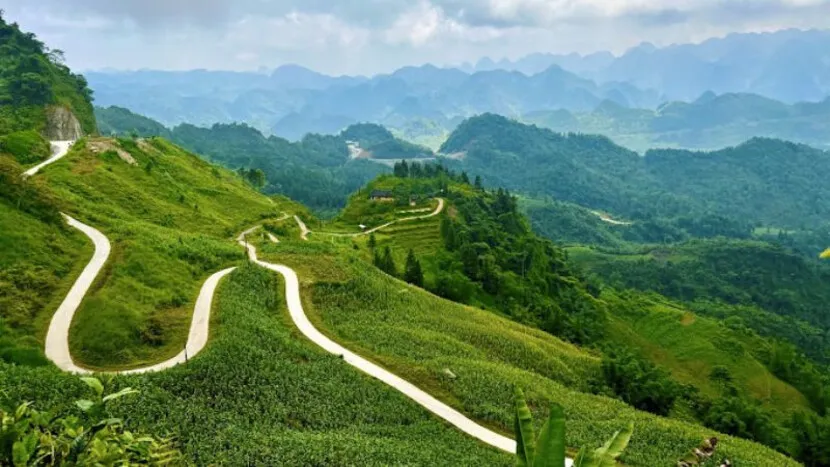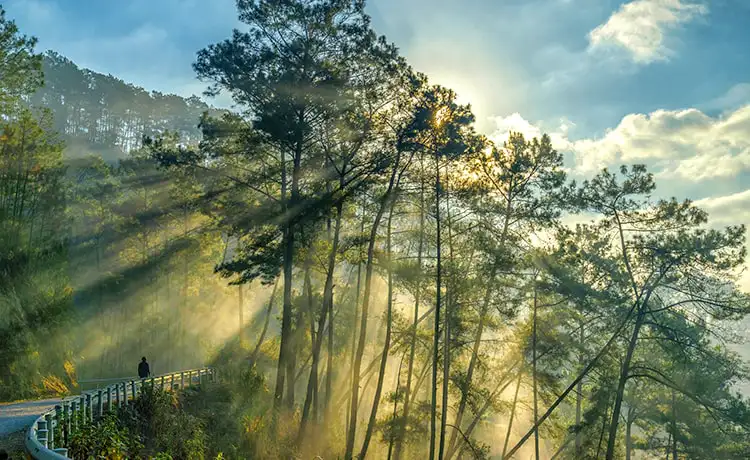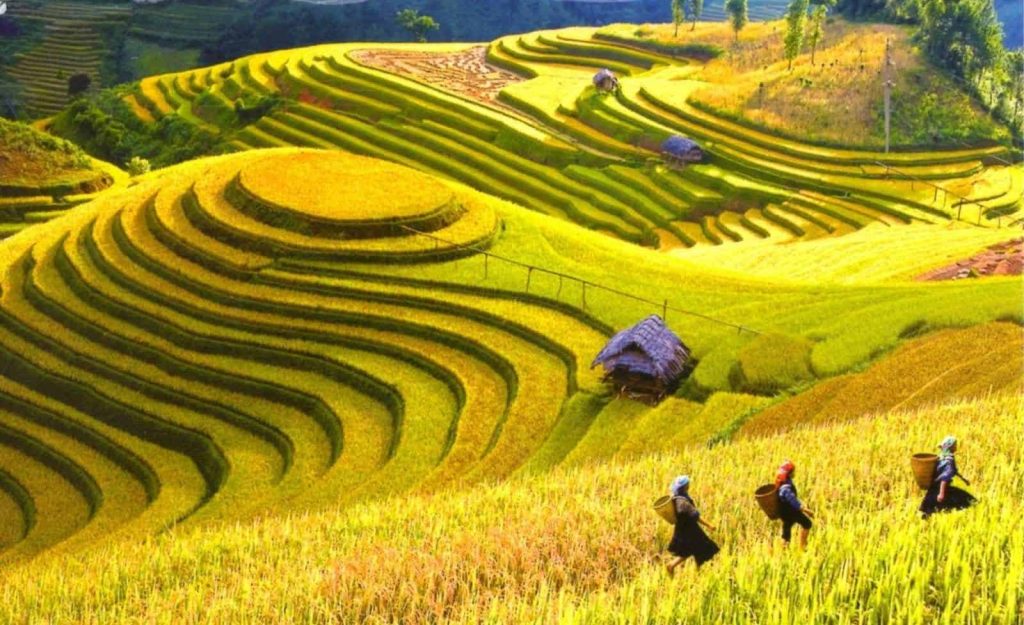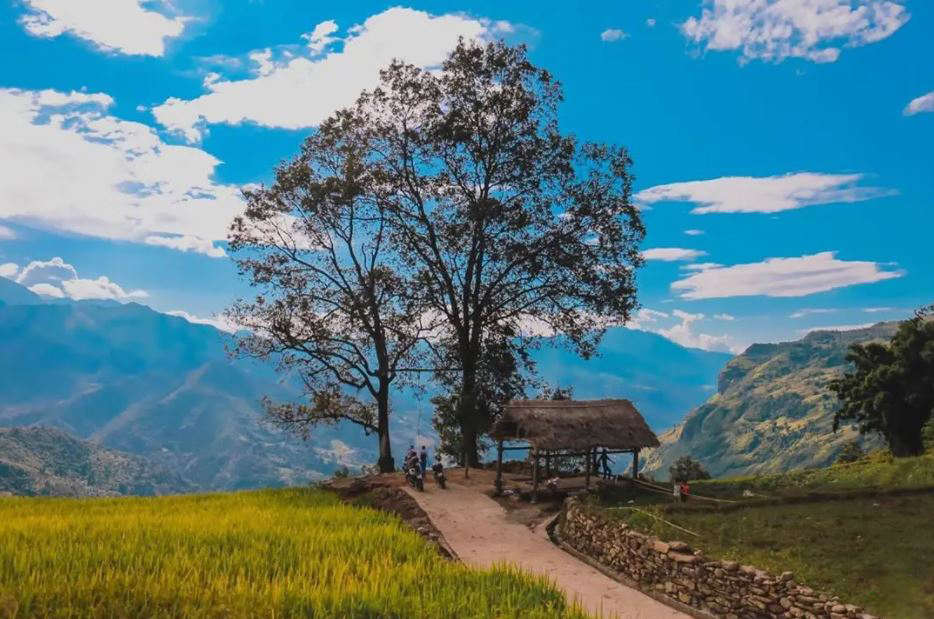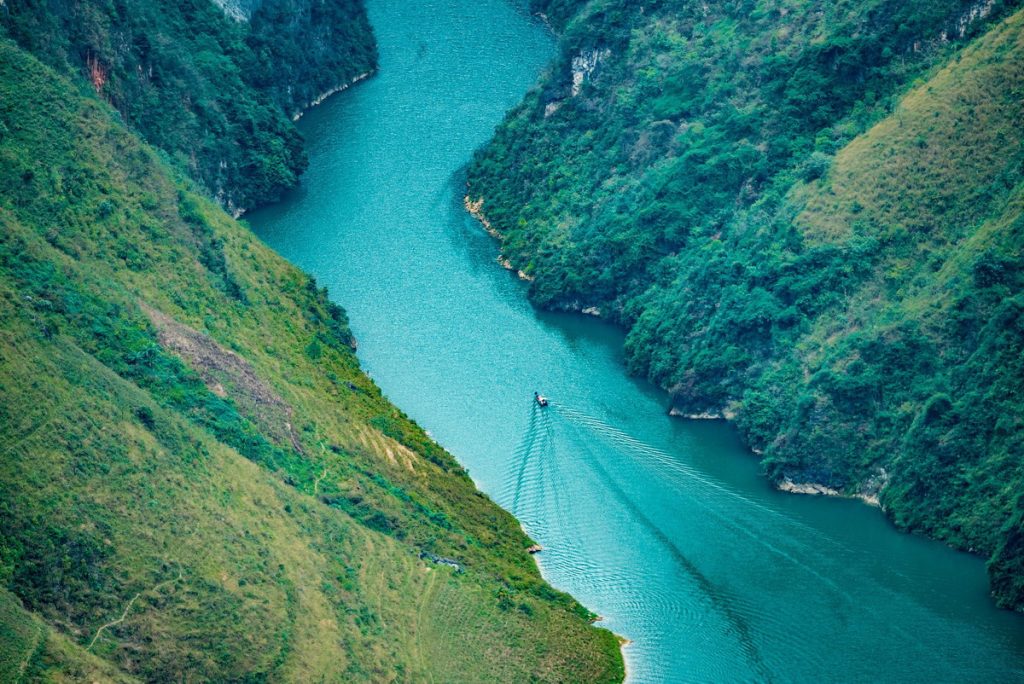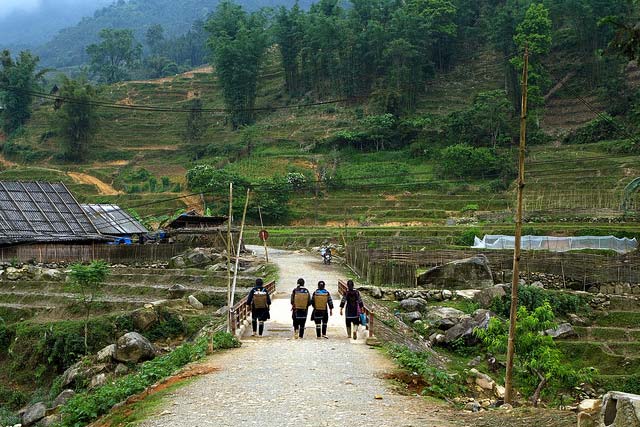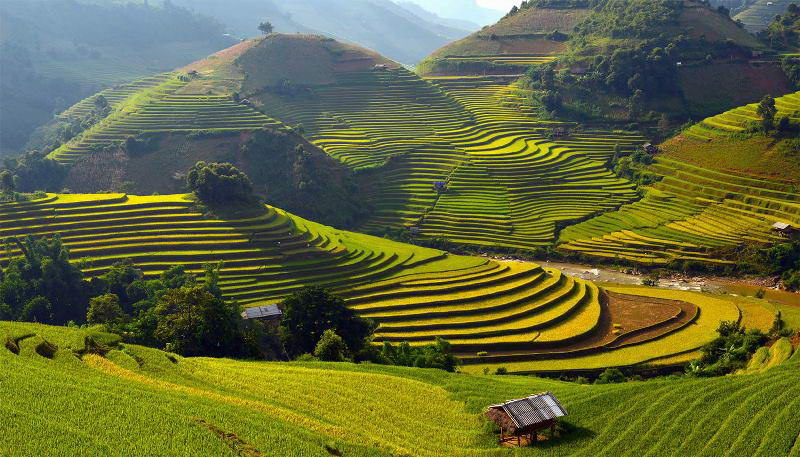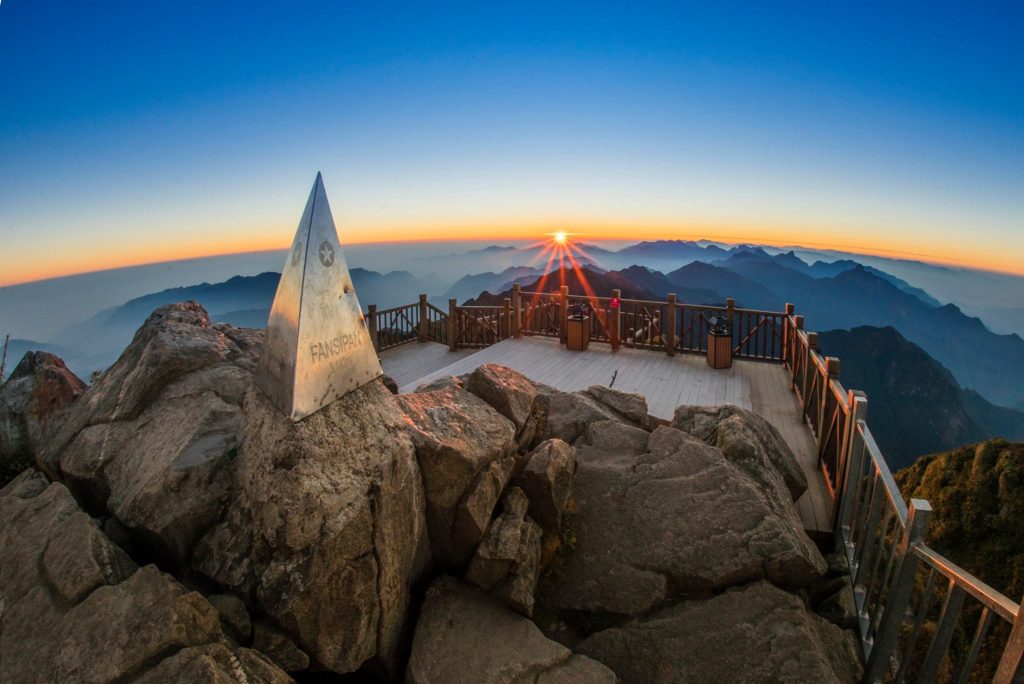Muong Hoa Valley – Heaven of the Lower Realm
Muong Hoa Valley, nestled in the heart of northern Vietnam’s Sapa region, is renowned for its breathtaking natural beauty and cultural richness. This picturesque valley is adorned with terraced rice fields that cascade down the mountainsides, creating a stunning patchwork of green during the growing season. The landscape is complemented by the presence of ethnic minority villages, where traditional customs and lifestyles have been preserved for generations.
Visitors to Muong Hoa Valley can embark on scenic hikes that offer panoramic views of the surrounding peaks and valleys. Along the way, encounters with Hmong and Dao ethnic communities provide insight into their daily lives and vibrant handicraft traditions. The valley’s tranquility and natural splendor make it a popular destination for photography enthusiasts and nature lovers alike.
Whether exploring the terraced fields, interacting with local villagers, or simply enjoying the serenity of the landscape, Muong Hoa Valley promises an unforgettable experience immersed in Vietnam’s cultural and natural heritage.
I. When is the best time to visit Muong Hoa Valley?
The best time to visit Muong Hoa Valley is during the dry season, which typically spans from October to May. During this period, the weather is cooler and more stable, with less rainfall compared to the rainy season (June to September).
The months of October and November are particularly favored because the rice terraces in Muong Hoa Valley are usually at their most vibrant green after the rice planting season. This makes for stunning photographic opportunities and enjoyable trekking experiences amidst the lush surroundings.
However, it’s important to note that Sapa, including Muong Hoa Valley, can experience chilly temperatures during the winter months from December to February, so travelers should come prepared with appropriate clothing. Overall, the dry season offers the best conditions for exploring the valley’s beauty and experiencing the cultural richness of the local ethnic communities.
II. What to do in Muong Hoa Valley?
Muong Hoa Valley offers a variety of activities that showcase its natural beauty and cultural heritage:
- Trekking and Hiking: Explore the picturesque landscape of Muong Hoa Valley by embarking on hiking trails that wind through terraced rice fields, bamboo forests, and scenic viewpoints. Trails can vary in difficulty, catering to both beginners and experienced trekkers.
- Visit Ethnic Minority Villages: Encounter the local Hmong and Dao ethnic communities that reside in the valley. Take the opportunity to learn about their traditional lifestyles, customs, and handicrafts. Many villagers are welcoming to visitors and may offer insights into their daily routines.
- Photography: Capture the stunning beauty of Muong Hoa Valley, especially during the rice growing season when the terraced fields are vibrant green. The valley’s natural scenery, dotted with villages and surrounded by mountains, provides ample opportunities for photography enthusiasts.
- Homestay Experience: Stay overnight in a local homestay to immerse yourself in the culture and daily life of the ethnic minority communities. Enjoy traditional meals, participate in village activities, and gain a deeper understanding of their customs and traditions.
- Visit Ancient Rock Carvings: Near Lao Chai village, explore ancient rock carvings that date back hundreds of years, offering a glimpse into the history and spiritual practices of the region’s inhabitants.
- Relax and Enjoy Nature: Simply relax amidst the serene surroundings of Muong Hoa Valley. Whether sitting by a waterfall, enjoying a picnic by the rice terraces, or soaking in the tranquility of the countryside, the valley offers plenty of peaceful moments to unwind.
Overall, Muong Hoa Valley provides a blend of outdoor adventure, cultural exploration, and natural beauty, making it a must-visit destination for travelers seeking an authentic experience in northern Vietnam.
III. How to get to Muong Hoa Valley?
To get to Muong Hoa Valley, located in the Sapa region of northern Vietnam, you typically need to follow these steps:
- Travel to Sapa:
– By Train: The most common way is to take an overnight train from Hanoi to Lao Cai City, which is the nearest railway station to Sapa. From Lao Cai, you can take a bus or taxi to Sapa town, which is about 38 km away.
– By Bus: There are also sleeper buses departing from Hanoi to Sapa, which take approximately 6-7 hours.
- From Sapa to Muong Hoa Valley:
– Trekking: Many travelers opt to trek from Sapa town to Muong Hoa Valley. There are various trekking routes of different lengths and difficulties. You can hire a local guide in Sapa who will lead you through the trails and provide insights into the area.
– Taxi or Motorbike: Alternatively, you can hire a taxi or motorbike from Sapa town to take you to the entrance of Muong Hoa Valley, where your trek can begin.
- Local Transport Options:
– Shuttle Bus: Some hotels or travel agencies in Sapa offer shuttle bus services to popular trekking points near Muong Hoa Valley.
– Local Guide or Tour: Joining a guided tour organized by local agencies is another convenient option. They often include transportation, guide services, and sometimes meals or homestay accommodation.
- Prepare for the Trek:
– Wear comfortable trekking shoes and appropriate clothing for hiking, as weather conditions can vary.
– Bring water, snacks, and essentials like sunscreen and insect repellent.
– Respect local customs and the environment during your visit.
Muong Hoa Valley’s accessibility from Sapa town makes it a popular destination for trekking enthusiasts and those seeking to immerse themselves in the natural beauty and cultural richness of northern Vietnam.
If you need more information, please contact us Mail: zgotravelvietnam@gmail.com or WhatsApp: +84 9766 09451.
By the way, a new beautiful place called Ha Giang loop which is very interesting, check this out: https://www.getyourguide.com/hanoi-l205/from-hanoi-3-day-ha-giang-loop-small-group-t739208
For Lan Ha Bay & Halong Bay trip, check this out: https://www.getyourguide.com/ha-long-l119790/from-ha-noi-2-day-lan-ha-ha-long-bay-5star-with-balcony-t739040/
Or https://www.tripadvisor.com/AttractionProductReview-g3737857-d28097153-Lan_Ha_Bay_Ha_Long_Bay_5_Stars_Private_balcony_2_days_trip-Tuan_Chau_Island_Halon.html

